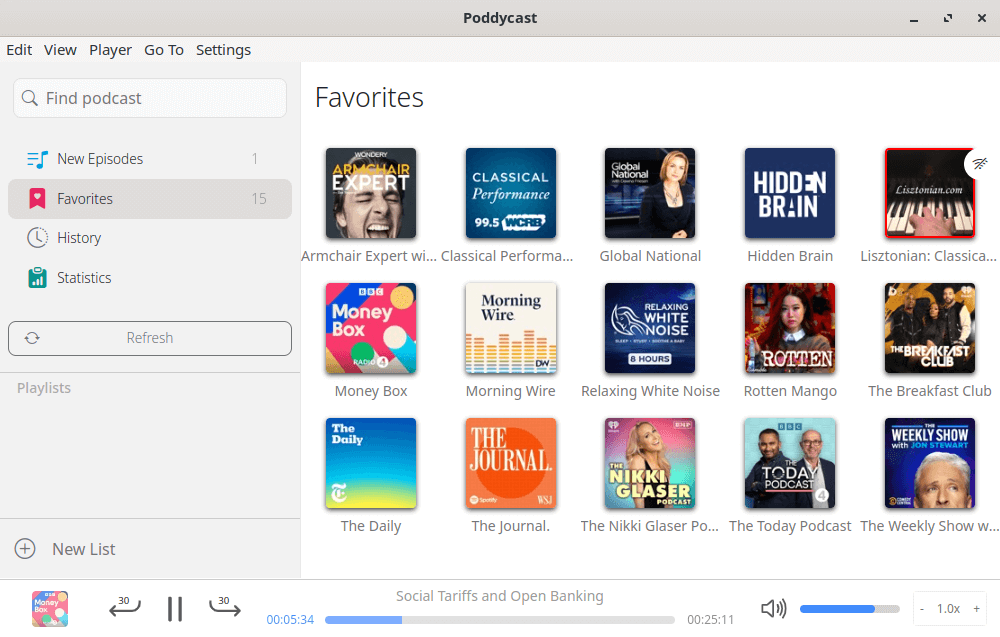In Operation
Here’s an image of Poddycast in action. The UI is well designed and intuitive to use.

One of the highlights of Poddycast is the find podcast functionality. By accessing the iTunes API it makes it a breeze to find your favourite Podcasts. In the image above, we added 15 podcasts which literally took about 1 minute to compile.
Other functionality provided:
- Create custom playlists which can be linked to podcasts.
- OPML (Outline Processor Markup Language) import and export. This lets you import and export podcasts from another program. But given that it’s so quick to add podcasts courtesy of the built-in iTunes API, we didn’t need this functionality.
- New episodes section.
- Jump forwards and backwards in 30 second chunks, or click the progress bar to jump to a specific point.
- Volume slider.
- Adjust playback speed.
- Light and dark modes.
- Statistics.
- Keyboard shortcuts.
- Internationalization support.
Summary
Most software built with Electron often fails to set the world on fire given that the framework is pseudonymous with bloat. But Poddycast is actually an impressive podcast player. It’s fast, stable, and easy to use.
The current version is described by the developer as a pre-release. Poddycast might even be our preferred way to listen to podcasts with a bit more development. For example, we’d like the software to remember our playback position of a podcast we’re part way through. And there’s currently no ability to download podcasts to your local machine for offline playback.
If your distro doesn’t offer a binary package for Electron 22, you might have issues getting Poddycast to run. Maybe the developer will produce an AppImage, snap, or Flatpak in the future?
According to the ps_mem utility (a very useful program which accurately reports memory usage of programs), Poddycast’s memory footprint is around 367MB. For an Electron-based app, that’s pretty reasonable.
Website: github.com/MrChuckomo/poddycast
Support:
Developer: Alexander Kettler
License: GNU General Public License v3.0
Poddycast is written in JavaScript. Learn JavaScript with our recommended free books and free tutorials.
Pages in this article:
Page 1 – Introduction and Installation
Page 2 – In Operation and Summary
